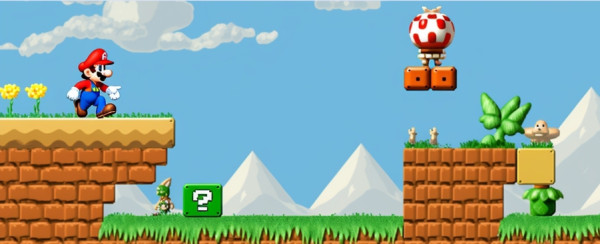Mastering 2D Game Art: A Comprehensive Guide


United States, 28th Jun 2024 – Creating 2D game art is both an art and a science, requiring a blend of creativity and technical skill. Whether you are an aspiring artist or a game developer looking to enhance your game’s visuals, understanding the process of making 2D game art is essential. This guide will walk you through the steps, tools, and techniques used by professionals in the industry, ensuring that your journey from concept to finished art is as smooth as possible.
Visit https://rocketbrush.com/ to learn more about their high-quality services and how they can elevate your game projects.
Understanding the Basics
What is 2D Game Art?
2D game art refers to the visual elements created for 2D games, including characters, backgrounds, objects, and user interface elements. Unlike 3D art, which involves creating models in three-dimensional space, 2D art is flat and relies on techniques such as drawing, painting, and animation to create the illusion of depth and movement.
Key Components of 2D Game Art
- Characters: The heroes, villains, and NPCs that populate your game world.
- Backgrounds: The environments where the action takes place.
- Objects: Items that characters can interact with, such as weapons, power-ups, and collectibles.
- User Interface (UI): The menus, buttons, and HUD elements that help players navigate the game.
How to Make 2D Game Art: Getting Started
Step 1: Conceptualization
Before diving into the creation process, it’s crucial to have a clear vision of what you want to achieve. This involves:
- Research: Study existing games to understand what works and what doesn’t.
- Brainstorming: Sketch out rough ideas for characters, environments, and objects.
- Mood Boards: Create a collection of images that capture the aesthetic and tone you want for your game.
Step 2: Tools and Software
Choosing the right tools is essential for creating high-quality 2D game art. Here are some popular options:
- Adobe Photoshop: A versatile tool for drawing, painting, and editing.
- Procreate: A powerful app for digital painting, popular among iPad users.
- Aseprite: Specialized software for pixel art and animation.
- Spine: An excellent tool for 2D skeletal animation.
Step 3: Drawing and Designing
Once you have your concept and tools ready, the next step is to start drawing and designing. This stage includes:
- Sketching: Begin with rough sketches to outline your characters and environments.
- Refining: Add details and polish your sketches to create more defined drawings.
- Coloring: Choose a color palette that suits your game’s theme and apply it to your designs.
How to Create 2D Game Art: Advanced Techniques
Animation
Adding movement to your characters and objects brings your game to life. Here are some techniques for effective 2D animation:
- Frame-by-Frame Animation: Drawing each frame individually for smooth, detailed movement.
- Skeletal Animation: Creating a skeleton for characters and animating their movements using bones and joints.
- Tweening: Using software to automatically generate intermediate frames between key poses.
Lighting and Shading
Proper lighting and shading techniques can add depth and realism to your 2D game art. Consider the following methods:
- Flat Shading: Simple and clean, with minimal shading.
- Gradient Shading: Smooth transitions between light and dark areas.
- Textured Shading: Adding texture to surfaces for a more detailed look.
Optimization
Ensuring that your 2D game art is optimized for performance is crucial. Here are some tips:
- Sprite Atlases: Combine multiple sprites into a single texture to reduce draw calls.
- Resolution: Create art at the appropriate resolution to balance quality and performance.
- Compression: Use compression techniques to reduce file sizes without sacrificing too much quality.
Examples and Comparisons
Art Styles in 2D Games
Different art styles can drastically change the feel of a game. Here are some popular styles:
- Pixel Art: Retro and nostalgic, often used in indie games.
- Vector Art: Clean and scalable, ideal for mobile games.
- Hand-Drawn Art: Rich and detailed, perfect for story-driven games.
Media Contact
Organization: Rocket Brush
Contact Person: Natali Kozachenko
Website: https://rocketbrush.com/
Email: Send Email
Country: United States
Release Id: 28062413625
